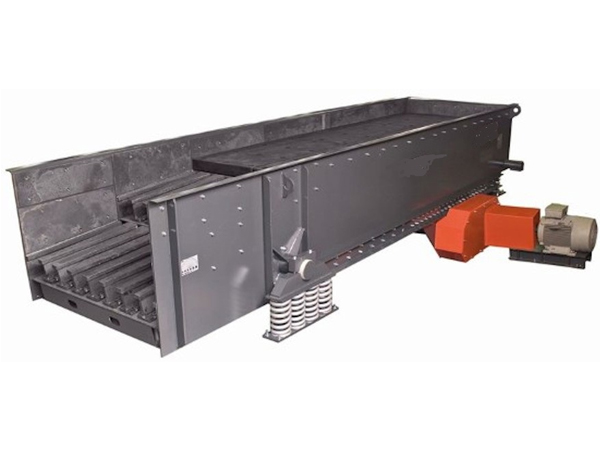How to properly maintain the vibrating feeder
Proper maintenance of a vibrating feeder ensures optimal performance, prolongs the equipment’s life, and minimizes downtime. Vibrating feeders are essential for moving materials smoothly and consistently, so here’s a guide to effective maintenance practices:
Vibrating feeder maintenance

1. Regular Inspections
Daily visual checks: Inspect for loose bolts, excessive wear, or cracks in the frame and support springs. Look for any signs of material buildup on the feeder pan that could impact vibration.
Check for abnormal vibrations: Listen for unusual sounds or vibrations that could indicate mechanical problems or unbalanced loads.
Inspect drive motor and belts: Check the drive motor and belts for signs of wear or alignment issues, as these can impact the feeder’s efficiency.
2. Lubricate Moving Parts
Follow lubrication schedule: Lubricate bearings, drive shafts, and any other moving parts according to the manufacturer’s guidelines. Over-lubrication or under-lubrication can cause mechanical issues.
Use recommended lubricants: Ensure you’re using the correct type and grade of lubricant for each component, as specified in the equipment manual.
3. Check and Adjust the Feeder’s Settings
Ensure proper vibration amplitude: Monitor and adjust the feeder’s amplitude settings if necessary to match the application requirements and material characteristics.
Calibrate the stroke: Regularly check and calibrate the stroke (the distance the feeder moves per cycle) to ensure it meets the required specifications.
Control feed rate: Maintain a steady and appropriate feed rate to prevent excessive wear and tear on the feeder pan and reduce potential overloads.
4. Inspect the Springs and Support Structure
Check spring integrity: Inspect the feeder springs for signs of fatigue or cracking, as damaged springs can reduce vibration efficiency and cause uneven feeding.
Inspect mounting hardware: Check that all bolts, nuts, and mounts holding the feeder are secure. Loose or damaged mounting hardware can lead to misalignment and excessive wear.

5. Clean the Feeder Pan and Components
Clear material buildup: Regularly clean the feeder pan and trough to prevent material buildup that can obstruct feeding and affect vibration.
Avoid moisture accumulation: Keep the feeder dry, as moisture buildup can lead to material clumping and motor damage over time.
6. Monitor Electrical Components
Inspect wiring and connections: Regularly check all electrical wiring, connections, and the control panel for any loose connections, frayed wires, or signs of overheating.
Examine motor health: Check the drive motor’s temperature during operation to ensure it doesn’t overheat. A motor running hotter than usual could indicate potential issues with bearings or insulation.
7. Conduct Routine Performance Tests
Check feed consistency: Test the feeder’s performance by observing the material flow to ensure it is consistent with no interruptions.
Adjust as needed: Make small adjustments to the amplitude, stroke, or speed based on test results to maintain optimal performance.
8. Perform Preventive and Scheduled Maintenance
Develop a maintenance schedule: Create a regular schedule for checking all critical components based on the feeder’s workload and manufacturer recommendations.
Replace wear parts on time: Parts like springs, liners, and motor components will wear over time, so replace them before they fail to prevent unexpected breakdowns.
Following these maintenance practices helps keep a vibrating feeder operating smoothly and efficiently, ensuring reliable material handling and reducing potential downtime.



